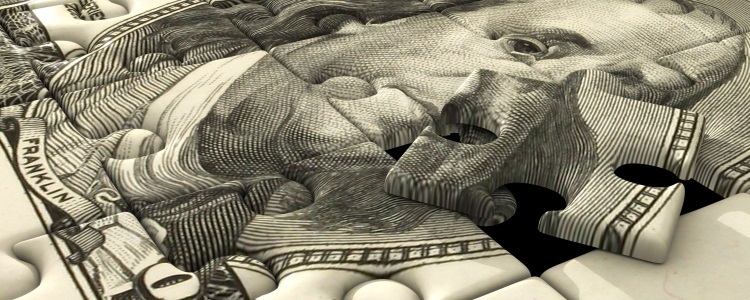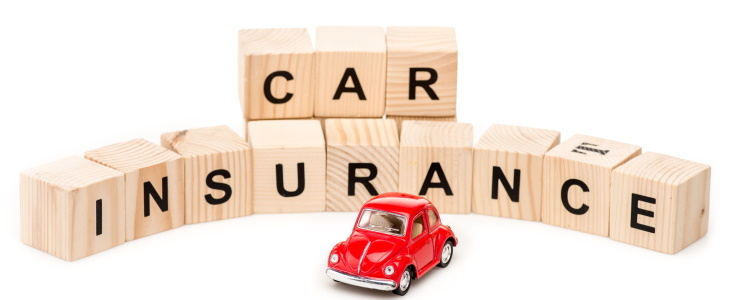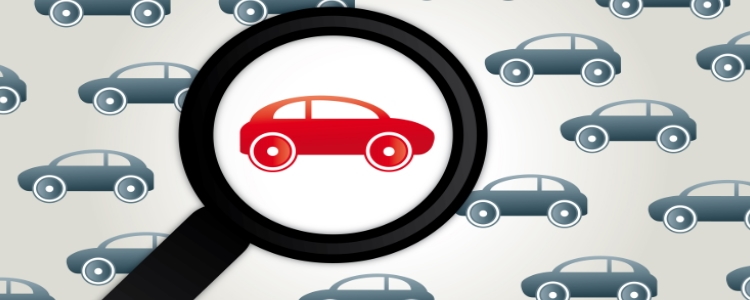Many poor credit borrowers worry about financing a vehicle, and they may be worried about making a big mistake in the process. Getting an auto loan can be a lengthy and stressful affair, but we’ve got ten tips to help you avoid making a car buying mistake when your credit score isn’t great.
10 Car Buying Mistakes
When you have bad credit, the details of your auto loan are very important. Since bad credit borrowers may qualify for higher interest rates than borrowers with good credit, getting a good deal takes on a new meaning. Not only should you look for a good selling price on a vehicle, but you should also be mindful during the entire process to avoid missteps that could cost you in the long run.
Avoid these ten mistakes while buying a car with bad credit:
1. Choosing the Longest Loan Term Possible
When you’re financing, it can be easy to make the mistake of financing for a long time. Longer loan terms equal a smaller car payment, but it’s not a great idea financially. Auto loans typically have terms that can range from 48 to 96 months, and almost always use a simple interest formula. Your interest charges are based on your loan term, interest rate, and loan balance. The longer you stretch your loan, the more you’re going to pay for that vehicle.
If you have bad credit, you may qualify for a high interest rate. And if you have a long loan term on top of that high interest rate, it could mean paying more for the vehicle than it’s worth.
It’s recommended that you choose a loan term that doesn’t exceed more than 84 months (especially if you finance a used car with poor credit). If you have a high interest rate, it’s a good idea to shop for a vehicle that you can comfortably pay off within 48 to 72 months.
2. Ignoring the Interest Charges
Try not to get into the mindset of “worry about those later” when it comes to your interest charges. It’s easy to get excited about your next vehicle, but don’t forget to take a hard look at your interest charges – it’s a large part of your total cost.
You can ask your lender to see an amortization schedule of your car payments, which outlines how much interest you pay each month and your total interest charges by the end of the loan (if you stay current and don’t pay extra). If you notice that you’re paying thousands of dollars more than what the vehicle is actually worth, it may be wise to either apply with a different lender, negotiate for a lower rate, consider a cosigner, or shop for something less expensive.
3. Being a Payment Shopper
Often, when you shop at a dealership, the dealer may tell you “If you buy this car, we can get the payment down to so-and-so.” While shopping for a vehicle around a monthly payment sounds like a good idea on the surface, it may not be the best way to go about it.
If you find a car you like but the monthly payment is too high, a dealer may say they can change some terms to make the payment lower. This often means extending the loan term to get a lower payment making the car easier to afford each month. However, extending a loan’s term without lowering the interest rate means paying more for the vehicle over the course of the loan.
Instead of shopping around based on monthly payment, shop based on the car’s selling price and loan term you can afford instead. Stick to your maximum budget and loan term, and try to find a vehicle that has a monthly payment you can afford.
4. Only Worrying the About Vehicle’s Selling Price
Many borrowers are most concerned about the actual selling price of the car and do their best to get the lowest possible price. While this is important, you have to remember that the selling price of a vehicle is only the starting point of the total cost.
Don’t forget about other dealer docs, taxes, titling and licensing fees, and extra dealer add-ons. Typically, you can either pay these fees upfront or roll them into your loan – but paying them upfront means a lower loan balance, a lower monthly payment, and fewer accrued interest charges. There’s also the cost of regular maintenance and auto insurance that you need to budget for, too! Remember that there are only a few things that are non-negotiable at a dealership - taxes, registration, and titling fees are some of the only things you can't haggle on.
5. Skipping the Vehicle History Report
If you’re buying a used car, make sure to look up its history. You can request a vehicle history report. There are also many sites out there that offer reports on used cars before you sign the dotted line.
Additionally, make sure to take a good look at the car’s title. Some branded titles include: flooded, reconstructed, fleet, or lemon. Dealerships don’t typically have vehicles with branded titles, but if you do come across a car with a branded title, it may be more costly to insure and can have a higher risk of mechanical failures. Aim for a used vehicle with a clean title and clean history.
6. Not Rate Shopping
Rate shopping is applying with multiple lenders (of the same type) within a short window of time. It minimizes the impact of hard pulls on your credit score.
You may know that when you apply for a car loan, a lender is very likely to do a hard inquiry on your credit reports. One hard inquiry hurts your credit score – typically around five to 15 points for up to 12 months. However, if you apply with multiple auto lenders within a two-week period, only one hard pull impacts your credit score. All are reported, but only one carries the impact because the credit scoring models can tell when a borrower is looking to take on new credit and they don’t punish them for looking for a good deal.
When you have poor credit, it’s important to look for a low interest rate and a good deal. It can be harder for borrowers with credit challenges to get a low interest rate. By applying with multiple lenders within two weeks, you can get a better idea of what rates you qualify for and choose the right loan for your situation and wallet without having to worry about drastically lowering your credit score.
7. Skipping a Down Payment
 Here at Auto Credit Express, we’re often asked by readers if it’s possible to get an auto loan without a down payment. And the answer is yes, it’s possible, but bad credit borrowers are typically required to have one.
Here at Auto Credit Express, we’re often asked by readers if it’s possible to get an auto loan without a down payment. And the answer is yes, it’s possible, but bad credit borrowers are typically required to have one.
If you have poor credit and you haven’t planned for a down payment, it could mean getting turned down for auto financing. Subprime lenders – lenders that assist borrowers with credit challenges – usually require a down payment of at least $1,000 or 10% of the vehicle’s selling price.
Even if you qualify for an auto loan that doesn’t come with a down payment requirement, down payments have many benefits. They lower your vehicle’s selling price which leads to a lower loan amount, fewer interest charges, and a smaller monthly payment. Having a down payment also increases your chances of getting approved for auto financing.
8. Not Getting a Reported Auto Loan
Some auto lenders don’t check your credit when you apply for a car loan, usually catering to borrowers with credit challenges. But while skipping the credit check is tempting, this usually means that the auto loan isn’t going to be reported on your credit reports.
A loan that isn’t reported to the credit bureaus means that your on-time payments don’t do anything to improve your credit score. When you have poor credit, a priority is often to get a loan that can improve your credit for future auto loan opportunities. If you want your credit score to see an improvement from the auto loan, ask the lender about their reporting practices.
If you decide to go with a car loan that isn’t reported, know that while the timely payments aren’t going to boost your credit, any missed/late payments are likely to be reported.
9. Taking the Car Home Before the Loan Is Approved
Some dealerships allow for spot deliveries, which is when the borrower gets to take the car home before the financing is finished. This is also called yo-yo financing, and it can cause some stress for you.
If you take a vehicle home before the financing is done, you may get a call and be told that your application was denied – and you have to bring the car back to the dealership to figure something out. Three things usually happen in this scenario: you can return the car and walk away; change the loan terms so you qualify; or find a different lender that can approve you.
Spot deliveries can create inconvenient situations, and possibly create the need for you to return to the dealer multiple times before the vehicle is officially yours. To avoid falling into yo-yo financing, don’t take home a car until the financing paperwork is completely done and you know that you’re approved for the loan.
10. Forgetting About Car Insurance
When you’re financing a vehicle, the lender requires that you have full coverage auto insurance. The car is the lender’s property until you complete the loan, so they require that it’s fully covered.
Full coverage insurance typically carries a higher premium than just a personal liability and property damage (PLPD) coverage plan, so be sure to budget it. You can usually call an insurance agent, tell them the type of vehicle you plan to finance, and they can give you an estimate over the phone.
To compare costs, be sure to call a few different insurance companies before you complete the financing paperwork. Many dealers require that you have proof of auto insurance, or an insurance binder before you can drive the car off the lot!
Ready to Find a Dealership With Bad Credit Options?
Since the car buying process can be long and stressful for borrowers with bad credit, we want to offer some help. At Auto Credit Express, we’ve created a nationwide network of dealers that are signed up with subprime lenders who specialize in assisting borrowers with credit challenges.
Instead of looking all over town hoping to run into a dealership that’s signed up with bad credit lenders, start right here with us instead! Fill out our free auto loan request form, and we’ll look for a dealer in your local area – no cost and no obligation.
















